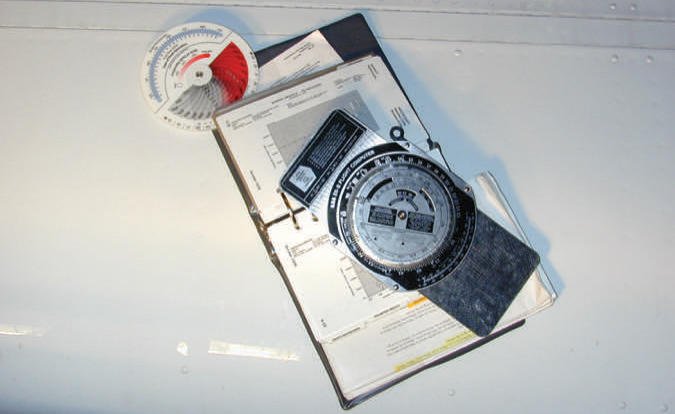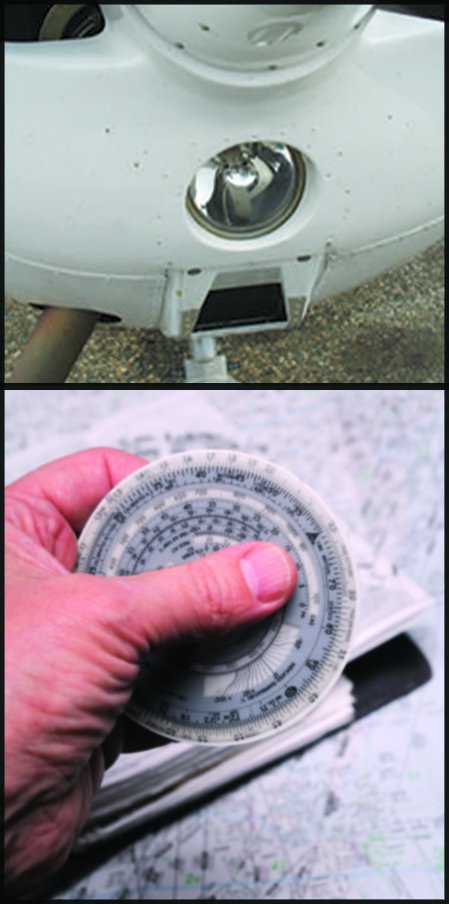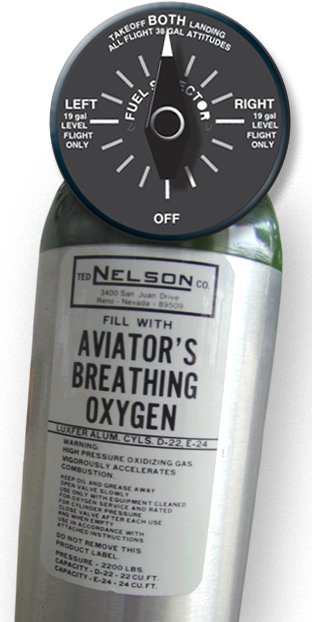It would be nice if economics didn’t force a lot of our flight training into a laser-like focus on getting through the written exam or checkride, and instead encouraged pilots to soak up what we might call extra-curricular aeronautical knowledge along the way. Some of things that can make our flying smarter and less risky just aren’t on the test. Learning them comes through experience, from a mentor or, if you are a really lucky, a seasoned, lifetime instructor with the time and motivation to go beyond the minimum requirements.
And there are a lot of old wives’ tales out there that either research or technology have disproven, or made obsolete. Never run a conventional aircraft piston engine lean of peak EGT is an example (you easily can if you do it correctly), or that pilots only need to use supplemental oxygen when the FARs require (it’s beneficial at night and at lower altitudes on long flights). Debunking things like that are important, but it’s just as important to develop a set of what might be called best practices, procedures shown by research and experience to produce optimal results. Let’s explore some examples.
1. Fuel Selector Follies

My first few hours as pilot in command were mostly in Cessna 150s and 172s, where I grew very accustomed to putting the fuel selector in the “On” or “Both” position and leaving it there, secure in the knowledge all usable fuel was available to the engine. When I transitioned to Piper Cherokees, I was mortified that anyone would build an airplane requiring me to switch fuel tanks to access half of the fuel. I got over that quickly, but one takeaway has always been with me: Once the engine is started, take off on the selected tank and only switch to another one while airborne.
The simple reason is to prevent engine failure from fuel starvation during takeoff, when we’re most vulnerable. Think about it: The engine is running just fine in the run-up block. If you reposition the fuel selector, there’s a chance it can be placed in the “Off” position, get hung up between detents or even select an empty tank. It’s debatable how remote that chance is, but I’ve seen engines quit from fuel starvation for exactly this reason. One was aboard a 172 still in the tiedown area shortly after engine start. Another was 20 feet above a runway on takeoff.
Some manufacturers’ pre-takeoff checklists, especially for twins, may include an item requiring that the fuel selector be turned to another tank (crossfeed in a twin) momentarily, then back to the recommended tank for takeoff. This is a really bad idea right before taking off. A better procedure would be to select the checklist position immediately after engine start, while you’re still on the ramp. Then, after configuring the airplane for taxi, switch back to the tank(s) you’ll use for takeoff. An even better plan would be to select the tank(s) after landing, while taxiing to the ramp. Then, before shutting down, move the selector(s) back to the preferred takeoff tank(s). That way, you’ve verified that crossfeed and/or the other tank position works, but have already selected the takeoff tank before the next engine start.
And not all fuel selectors are the same: That 172’s engine quit from fuel starvation in the tiedown area because a Cherokee pilot, unfamiliar with which end of the Cessna’s fuel selector was which, dutifully repositioned the handle per the checklist. There was just enough fuel in the system to start the engine and run it for 60 or so seconds before it quit. Think about that next time you’re tempted to switch tanks right before takeoff.
2. Get As High As You Can
I’m a firm believer in climbing as high as practicable for the planned flight. On a short hop to an airport 20 miles away, I’ll spend the first half climbing, probably reaching 2500 feet or so agl, then reduce power and begin a descent for the destination. By the time I get there, I’m close to pattern altitude, and ready to level off and decelerate for landing gear and flap extension. The reasons for getting as high as possible are many.
First is that in a single after the engine fails, “altitude is life” (“speed is life” in a twin after an engine fails). If a single’s lone engine quits, the time available for you to select an emergency landing area, maneuver toward it and set up for an off-field, power-off landing—while running the engine failure checklist, securing the cabin and declaring an emergency—is determined by the altitude at which the engine quit. It’s really silly to not get some air under you for precisely that reason.
A second reason is that true airspeed increases with altitude, two percent for each thousand feet. The math works out that a 100-knot indicated airspeed at sea level produces 120 knots true at 10,000 feet msl. The air is less dense at altitude, of course, which translates into less drag. The same power setting at a low altitude—presuming it’s available at your chosen cruising altitude—provides a higher true airspeed on the same fuel burn or less. That means greater efficiency, range and endurance. Not a bad deal overall.
Yes, you’ll consume more fuel climbing and—there being no free lunch—won’t get back all of the energy you consumed with a higher airspeed in the descent, but them’s the breaks. You’ll get back a lot of that energy, however, plus the air usually is cooler and smoother at altitude than it is down below. There’s usually less traffic above 5000 feet agl than there is below that altitude, too. The only real downside is if you have to get on the ground in a hurry.
Ultimately, the greatest efficiency depends on the airplane’s climb capability, winds aloft and other variables, which are easily considered by using the “what-if” capabilities of your favorite electronic flight bag app. Use those functions and the availability of supplemental oxygen to choose the highest reasonable altitude for your mission.
3. Lights On
While mid-air collisions are rare, they do happen. Avoiding them means paying attention to the airspace around your aircraft and being extra-vigilant in locations where the likelihood of encountering another aircraft is high. Examples include an airport’s traffic pattern, over navaids and terminal fixes, and near prominent landmarks and mountain passes, to name a few. Turning on your landing/taxi lights can help.
In my experience, most strobe lights are essentially worthless in the daytime. Sure; maybe you’ll notice the strobes if you spot nearby traffic, but you likely won’t spot that traffic because of the strobes. They’re just not that conspicuous in the daytime. What does get attention, however, is the brighter, high-wattage landing or taxi lights aboard that traffic, especially if they have a flashing or wig-wag capability.
Kelownian Pilot
My airplane has three different landing/taxi light systems. In addition to a small light in the cowling, there’s a larger, high-wattage light on the nosegear, plus a pair of lights on the main landing gear. The lamp in the nosegear light is an incandescent that I’ve never had to change in the almost 20 years I’ve owned the airplane. It’s also an amp-sucker that easily will overheat the circuit and trip the breaker switch if left on for more than a few minutes. I rarely use it. Of course, any lights mounted to the airplane’s retractable landing gear are only useful for collision avoidance when the gear is extended. Duh.
My normal procedure is to turn on the nosebowl and main-gear lights when taking the runway for takeoff, then switching off the main-gear lights after lifting the landing gear handle to start the retraction cycle. The nosebowl light—an LED—stays on until I’m climbing out of 5000 feet and goes back on in the descent at the same altitude. It’s also on whenever I’m called as traffic to another flight, to try helping its crew spot me. When the wheels goes back down for landing, the lights on the main gear go on.
With all those lights on in the pattern, the airplane is hard to miss. It’s also easier for opposing traffic to see me when the nosebowl light is on at altitude. Using your landing/taxi lights for anti-collision purposes likely is going to increase your airplane’s conspicuity more than a couple of measly strobes.
4. Know Where You Are
Before GPS and moving maps, answering a passenger’s inevitable where-are-we question often meant responding with some gibberish about the 243-degree radial of the Podunk Vortac for 37 miles. When asked to translate that into passenger-speak, an embarrassing moment of silence often followed, coupled with some folding and unfolding of a chart. The only way to get out of that moment was to come up with something like, “We just passed over a town called Smallville and we’ll be almost due east of Gotham in a few minutes.”
These days, you can simply point to the screen and the distance-remaining value, then the time remaining. But what if all the magic failed, what would you do? Unless you’ve been following along, how would you know where you are and when you’ll get to your destination? This isn’t rocket science, nor does it have to be exact, within, say, five nm. But it does mean you need to know if you’re 20 miles southwest of Smallville or southeast.
My first dual cross-country was a disaster. I was lost within 15 miles of the departure airport; a plot of the radar ground track would look like a drunken snake’s. The instructor’s judicious logbook entry? “Needs to work on planning.” Before the next attempt, I spent some time thinking about what I did wrong (everything) and how I would do it differently the next time. My next dual cross-country was much better: I had perfected the art of drawing a straight line on a sectional, using easy-to-spot landmarks as checkpoints and keeping a thumb on the chart, marking where I was. I even made up custom flight logs on a typewriter and photocopied them at the office, then sliced them up to fit my kneeboard.
These days, we don’t have to follow along on a paper chart, but we do need to follow along. We should at least know which state we’re over, where the nearest ILS or runway of any size is, and whether we can glide there if the engine quits. Automation has simplified a lot of this at the same time it’s become both more accurate and foolproof. But good airmanship and professionalism demands we keep tabs on our location manually, a thumb on the chart if you will. That way, when ATC asks us where we are for radar identification, the first words out of our mouth aren’t, “Stand by.”
5. Write It Down
Perhaps it’s a holdover from the days I used that paper flight log, but I try to write down the information flowing to me while flying. Routes, clearances, squawk codes, altitudes and ATIS identifiers are among the notes I make on paper, with frequencies dialed into either the other radio or the standby window of the one I’m using. By the time I have the arrival ATIS, I already have what I think is the next frequency dialed into the standby, and the tower and ground control frequencies at my destination are in the other radio. When the time comes, a flip of the transmitter selector switch and I’m in business.
Cockpit notetaking—at least with paper and pen—is something of a lost art in today’s typical cockpits. The truly anal among us may “write” things into our EFB’s scratchpad window, saving the results for later analysis. Meanwhile, I’ve accumulated a sizeable stack of 5-by-8-inch notepaper detailing dates, tach times, arrival and destination points, and fuel-flow readings. With all that information…I can do very little after the fact, except enter some of it into my logbook’s remarks column. But it all can come in very handy on a dark and stormy night when you have to squawk 7600, ATC acknowledges your radio failure and then asks you to go back to your previous squawk code.
Putting It All Together
As we accumulate hours aloft, we also pick up a few tricks and tips. These are just a few of mine, but they each have a story behind them and a lesson learned. Your instructor likely is doing the best he or she can. Glean worthwhile tips from anyone you can, discard the bad stuff and keep the good.

Fuel selectors come in all sizes, shapes and locations throughout general aviation cockpits. Some are on the floor between the seats; some are on the floor at the bottom of the instrument panel. Some are under our right elbow, or our left knee, or over our left shoulder. Some only have “On” and “Off” positions while others feature multiple knobs and levers, and enough sternly worded placards to frustrate a lawyer. Once the engine is running, leave it alone until you’re airborne and have some gliding space underneath you.
If you’re doing it right, cruising at an efficient altitude for a few hours can mean you’re depriving yourself of oxygen and aren’t as sharp as you were when you took off. Each of us has a different tolerance for and symptoms of hypoxia—lack of oxygen—and sometimes it can be difficult to decide if it’s the altitude or the dilemma when we just can’t make a decision. If for no other reason than my airplane likes to spend hours at a time at five-digit altitudes, I try to carry supplemental oxygen on long trips. I feel better at the other end, I can see better at night and I make better decisions while en route. If you take the advice to climb to more efficient altitudes, you also need to consider how efficient you’ll be after you’ve been there for a couple of hours.
Jeb Burnside is this magazine’s editor-in-chief. He’s an airline transport pilot with a bunch of hours and owns a Beechcraft Debonair, plus half of an Aeronca 7CCM Champ.




